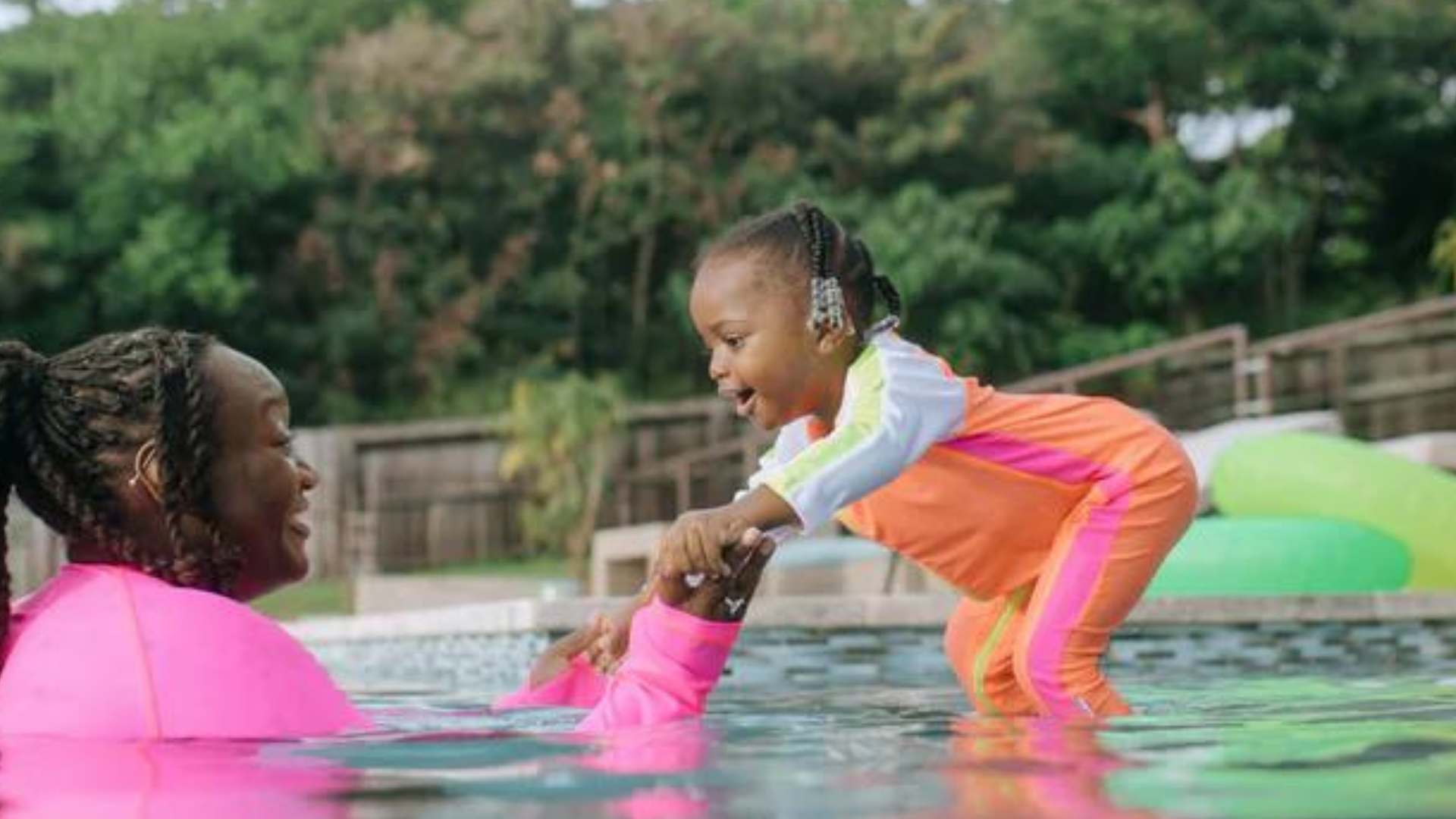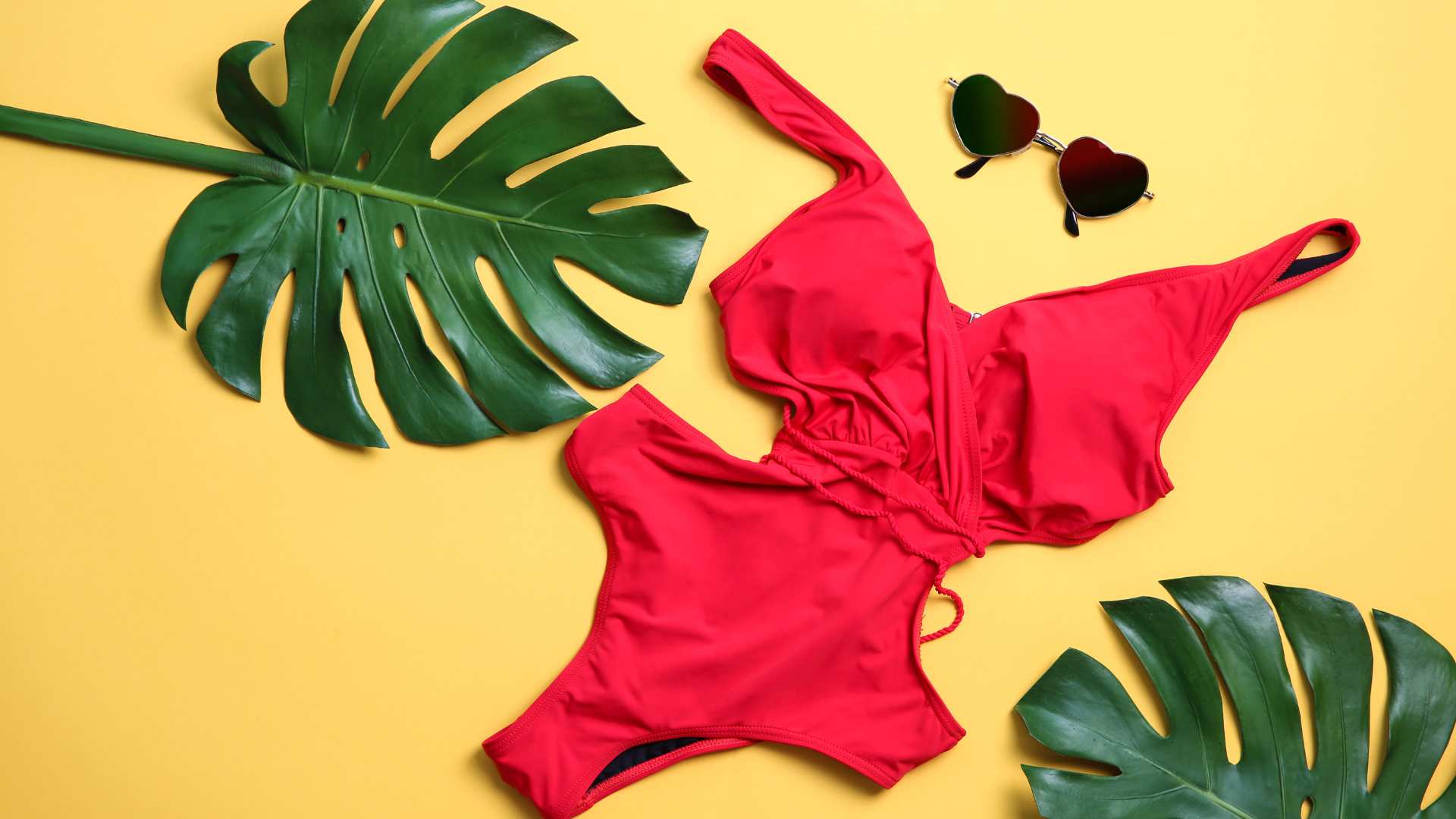
What is the best swimsuit color for underwater visibility?
When picking out the perfect swimsuit for your kids (or yourself), the color you choose impacts more than just style. You can improve your child’s water safety by choosing the right swimsuit color.
According to NDPA, drowning is the leading cause of unintentional injury death for children ages 1–4. By choosing swimwear colors that enhance underwater visibility, you add an extra layer of protection for your little ones.
Quick links:
The science behind underwater visibility
Best colors for underwater visibility
Colors to avoid for underwater visibility
Additional factors to consider
Looking for hi-vis swimwear options? Check out the SwimZip neon swimwear collection. From sunsuits and rash guards to euro swim shorts, you’ll find everything to keep your family safe and looking great during hot summer days.
The science behind swimsuit visibility underwater
The behavior of light underwater explains why some swimsuit colors stand out more than others. This is how water affects light:
- Absorption: Water absorbs different light wavelengths at different depths. Red light disappears first, usually within 15–20 feet of the surface. Orange and yellow follow, while blue and green travel deepest. This phenomenon causes open water to appear blue or green.
- Scattering: Water molecules and suspended particles disperse light, reducing the clarity and definition of submerged objects.
- Refraction: Light bends as it moves from air to water, causing underwater objects to seem closer or slightly distorted.
These factors influence how we perceive colors underwater. Bright, fluorescent colors such as neon yellow and orange offer high visibility. They reflect more light and contrast strongly against the typical blue-green underwater background.
Water conditions also affect visibility. Clear water improves visibility better than murky water, and sunny conditions increase light penetration compared to cloudy days. Visibility typically decreases as depth increases.
This is why we design our high-visibility swimsuits to enhance safety by increasing the visibility of swimmers in all aquatic environments.
Top swimsuit colors for underwater visibility

Bright neon colors provide the best visibility in water, creating a stark contrast against the background and helping swimmers stand out. Let's explore the top swimwear colors for underwater visibility and how they perform in different conditions.
Bright pink
Bright pink offers a stark contrast against most natural water colors. It consistently shows the best in most conditions.
Best visibility: Pool water, clear ocean water
Least visibility: Waters with a reddish tint (rare)
Make your little girl visible and protected with a Neon Pink Long-Sleeved Rash Guard. The bright pink base color provides high visibility while the floral pattern adds style.
Neon yellow
Neon yellow stands out brilliantly in both light and dark water conditions, remaining visible even in murky or shadowy areas. This color is particularly effective in open water environments such as lakes and oceans.
Best visibility: clear water, bright sunlight
Least visibility: very deep water, nighttime swimming
For ultimate visibility, check out our Neon Yellow Rash Guard. Its vibrant yellow color will make your little one stay visible while enjoying full-body sun protection.
Neon green
Neon green is highly visible in pools and ocean shorelines; it is a top choice for safety-conscious swimmers.
Best visibility: pool water, shallow ocean water
Least visibility: water with heavy algae growth
Keep your child safe and stylish with our Neon Green Rash Guard. The bright green pattern ensures high visibility while providing full UPF 50+ sun protection.
Neon orange
Neon orange is another top performer for underwater visibility. Its bright, warm tone contrasts sharply with cool water colors and makes it easy to spot from a distance.
Best visibility: Clear blue water, overcast days
Least visibility: Muddy or silty water
For maximum visibility on cloudy days, try the Neon Orange Ruffle One-Piece Swimsuit. The vibrant orange color keeps your girl visible while the playful shark design adds a fun touch.
Lime green
Lime green offers great underwater visibility because of its bright, eye-catching hue. It stands out well in both natural and man-made water environments.
Best visibility: Pool water, clear lakes
Least visibility: Waters with heavy plant growth
For a highly visible and sun-safe option, consider our Green Euro Swim Shorties. With a lime green hue, your child will be easily spotted in the water.
Bright red
While red light is absorbed quickly underwater, bright red swimwear can still offer good visibility, especially in shallow water and pools.
Best visibility: Shallow water, pools, surface swimming
Least visibility: Deep water, open ocean
Our Fiesta Red Swim dress provides excellent visibility in shallow water while offering full-body sun protection.
Fluorescent colors
Fluorescent colors, including yellows, greens, and pinks, offer superior underwater visibility. They appear to "glow" underwater, making them highly visible in various conditions.
Best visibility: All water conditions, especially in lower light
Least visibility: Very deep or murky water
Explore SwimZip's range of neon swimwear approaches fluorescent-like visibility underwater and protects from the sun.
Contrasting combinations
Swimsuits that combine bright colors with high-contrast patterns can enhance visibility underwater. The contrasting elements help break up the swimmer's outline, making them more noticeable.
Best visibility: Most water conditions
Least visibility: Depends on the specific color combination
Check out our Neon Pink and Orange Long Sleeve Romper Swimsuit for a great example of contrasting patterns that enhance visibility.
Reflective elements
While not a color, reflective elements on swimwear can greatly enhance visibility, especially in low-light conditions or when light is shined on the swimmer.
Best visibility: Low light conditions, when illuminated
Least visibility: Very murky water, when not directly illuminated
With our high-visibility swimwear and bright patterns, you can keep your family in sight while hiding them from the sun’s harsh UV rays.
Colors to avoid for underwater visibility
Some swimsuit colors blend into the underwater environment, so swimmers are harder to spot. If you’re trying to stand out or keep your kids visible in the water, avoid these swimsuit colors:
- Dark blues: Navy and deep blue swimsuits quickly disappear underwater. These colors absorb light rather than reflect it, reducing visibility even in clear conditions.
- Black: Similar to dark blues, black swimwear absorbs light and fades into the background. This color presents particular challenges in low-light conditions or murky water.
- Dark greens: Green hues, especially darker shades, blend with algae-rich water or areas with abundant underwater vegetation.
- Gray: This neutral color lacks contrast against many underwater backgrounds, particularly in overcast conditions or deeper water.
- Earth tones: Brownish tones fade quickly underwater and blend with sediment in sandy or silty environments.
- Camouflage patterns: While popular for their style, camouflage designs serve their intended purpose too well underwater, so swimmers are difficult to notice.
These colors pose safety risks for young swimmers, making them hard for parents or water traffic to spot.
Additional factors to consider
While the right swimsuit color is important for underwater visibility, it's not the only factor that affects how easily a swimmer can be seen. Let's explore some additional elements that play a role in water safety and visibility:
- Contrast with surroundings: A swimsuit that stands out against the pool bottom or natural environment improves visibility. Light-colored pool surfaces benefit from darker, vibrant colors, while darker water backgrounds call for brighter hues.
- Pattern size: Large, dark patterns often remain visible at greater distances than small, intricate designs.
- Reflective materials: Swimwear with reflective strips or elements can catch and bounce light, increasing visibility in low-light conditions or deeper water.
- Water clarity: Clear water gives better visibility of all colors, while murky or cloudy water reduces overall visibility regardless of swimsuit color.
- Lighting conditions: Bright, sunny days provide optimal visibility. Overcast skies or evening swims may require brighter, more reflective swimwear colors.
- Depth: Color visibility changes with water depth. What stands out in shallow water might not be as effective in deeper areas.
- Movement: A swimming child creates ripples and splashes, which can either draw attention or obscure visibility depending on the surrounding conditions.
Tips for enhancing water safety beyond swimsuit color
Choosing a high-viz swimwear is just the first step in aquatic safety. Here are some other practices you should follow:
- Adult supervision: An adult should watch children near water at all times. Avoid distractions such as phones or conversations.
- Swim lessons: Enroll children in age-appropriate swimming classes to build water skills and confidence.
- Life jackets: Use Coast Guard-approved life jackets for young or inexperienced swimmers, especially in open water.
- Water rules: Set clear guidelines for water behavior, such as no running near the swimming pool or being in the water only when adults are present.
- CPR knowledge: Learn CPR and basic water rescue techniques.
- Pool security: Install proper fencing and self-closing gates around home pools.
- Swim partners: Teach children to always swim with a buddy, even in supervised areas.
- Distress awareness: Learn to recognize signs of drowning, which often differ from common expectations.
- Water assessment: Check for currents, underwater hazards, and water depth before swimming.
Combine these practices with high-visibility swimwear for a comprehensive approach to water safety.
Choose SwimZip's high-visibility swimwear options
SwimZip's neon swimsuit collection offers more than just easy spotting in the water. Our sun-protective beach apparel, made with UPF 50+ material, shields you from 98% of dangerous UVA and UVB rays. This superior protection helps prevent painful sunburns, sun poisoning, and long-term skin damage.
Our sun-safe clothing combines practicality and style. With different sizes and designs in our collections, every family member can find their perfect high-visibility fit.
Whether you're planning a beach day or an outdoor adventure, SwimZip's high-visibility gear keeps you noticeable and safe from harmful sun exposure. Embrace the fun of summer with confidence.
Best swimsuit color FAQ
What are the most visible colors for swimwear?
Neon colors, such as neon yellow, pink, bright orange, and lime green, are the most visible bathing suit colors. These bright, fluorescent hues are the safest colors that create a strong contrast against the water, making the wearer easier to spot from a distance.
Is hi-vis swimwear visible in all bodies of water?
Hi-vis swimwear is highly visible in most bodies of water, including pools, lakes, and the ocean. But, factors such as water clarity, depth, and lighting conditions can impact visibility. In murky or deep water, neon colors may not be as easily seen, but they still offer better visibility than dark colors.
Is light blue better than white for visibility?
Light blue offers excellent underwater visibility, often better than white. It contrasts well with most pool backgrounds and water tones. While white reflects more light, light blue stands out distinctly in aquatic environments.
Why should strong swimmers also think about swimsuit color?
Even experienced swimmers benefit from highly visible swimsuits. In open water or busy pools, bright or bold colors stand out. This helps lifeguards and swim buddies spot you quickly. While skill reduces risks, a visible swimsuit adds an extra layer of safety for all swimmers. Swimmers in open seas also need to advertise themselves to boat traffic to remain safe.
Further reading
Resources
The Latest Drowning Statistics. (n.d.). National Drowning Prevention Alliance. https://ndpa.org/parenttoolkit/BlogsParentToolkit/BLOG-The%20Latest%20Drowning%20Statistics-NDPA.pdf





Leave a comment
This site is protected by hCaptcha and the hCaptcha Privacy Policy and Terms of Service apply.